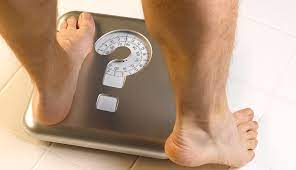
Table of Contents
This Morning Presenter Alison Hammond’s Weight Loss Secrets
Alison Hammond, presenter of This Morning, once weighed 20 stone at her heaviest. But she has recently shed an incredible amount of weight and now looks fantastic – something her fans are quick to compliment her on.
She has been candid about her weight loss journey, sharing details about the changes she’s made to her diet and exercise regimens. Here’s how she’s been able to shed so much pounds!
Sugar-Free Farm
Alison Hammond has achieved two stone in weight loss thanks to her participation in Sugar Free Farm, and she feels more confident than ever before. Despite her hectic lifestyle, she managed to stick with the diet plan and maintain her progress.
ITV’s 2016 reality show “Supermarket Goth” saw seven celebrities live together on an organic livestock farm and eat clean for two weeks. Politician Ann Widdecombe, former Doctor Who star Peter Davison, TOWIE star Gemma Collins, comedian Joe Pasquale and BGT finalists Stavros Flatley (father and son) all joined Alison on the journey.
Before the show, most of the contestants were eating a lot of processed foods that contained sugar. But this expose exposed them to how eating sugar can have negative consequences on their health, such as inflammation and the development of serious diseases.
At Sugar Free Farm, visitors were introduced to a variety of recipes and dishes without excessive sugar content. They learned how to cook items such as sausages, beetroot, and kale without resorting to sweetening them with sugar.
In addition to improving their health, the celebrities on the show got to know each other and form friendships along the way. The group of seven all live together and enjoy fun times together.
Sugar has many detrimental effects on our health, such as weight gain and an increased risk for obesity and diabetes. Furthermore, it can contribute to depression and anxiety symptoms.
Another reason why cutting sugar from your diet may help you achieve weight loss is it fosters a healthier eating mindset. People who worry about their weight or how certain nutrients affect health tend to make changes such as eliminating sugar from their meals.
Recent studies have indicated that sugar is the leading dietary contributor to unhealthy weight gain. This is because sugar causes our bodies to store fat as a reserve, leading to increased weight gain as well as other health complications like heart disease or dementia.
High-Intensity Interval Training (HIIT)
High Intensity Interval Training (HIIT) is an effective form of exercise that can help you shed pounds. These workouts involve periods of intense physical activity followed by rest or gentler activities; the intervals can last anywhere from 45 seconds up to several minutes.
HIIT is an effective way to burn calories, making it easier for you to reach your weight loss objectives. Studies show that HIIT can burn up to 20-30% more calories than traditional cardio and increases metabolism after the workout is finished.
However, you must remember that HIIT should never replace a nutritious diet and regular exercise. For optimal results, combine HIIT with other types of exercises for maximum benefit.
Many HIIT exercises are short, making them convenient to fit into your schedule. Furthermore, most of these exercises require little or no equipment – making HIIT ideal for busy individuals who don’t have much spare time to dedicate towards physical activity.
Another advantage of HIIT is its muscle-toning potential. This is especially beneficial if you’re trying to shed pounds, since increased muscle mass will enable your body to burn more calories throughout the day.
For best results, do HIIT three times a week for at least 20 minutes. Although sticking to this high-intensity workout can be challenging at first, the long term benefits will be worth all the effort in the end.
HIIT has the major advantage over steady-state cardio in terms of fat burning: you get more out of your time and your exercise is likely more sustainable. With HIIT, you get more benefit for less effort, making it a beneficial exercise choice.
Furthermore, HIIT may help lower blood pressure and heart rate in overweight or obese individuals, leading to other health benefits as well. One study revealed that 8 weeks of HIIT on a stationary bike reduced blood pressure as much as continuous endurance training did for adults with high blood pressure.
Furthermore, HIIT increases your nitric oxide availability, known to improve blood flow and lower the risk of cardiovascular disease. It may also help lower triglycerides and low density lipoproteins – important factors in lowering cholesterol levels – as well as boost insulin sensitivity and control blood sugar levels.
Portion Control
Portion control is one of the most beneficial tools for creating healthy eating habits. Not only does it prevent binge eating and excessive weight gain, but it also makes you feel fuller for longer after a meal.
Many people find that using a food scale or app is enough to monitor their dietary intake. However, for others, the necessity of tracking calories or macros may prove too tedious or restrictive.
Portion control is an invaluable tool for those striving to develop balanced eating habits and prevent overeating. It helps you consume the correct amounts of each main food group–vegetables, fruit, grains, protein and dairy–without overindulging.
Eating more whole foods and less processed items will encourage your body to get all of the essential nutrients it requires for optimal functioning and strength.
Furthermore, exercise can decrease your risk for chronic diseases like diabetes and heart disease. Furthermore, you’ll enjoy improved energy levels and an uplifted mood.
As a result, you’ll be more motivated to maintain a healthier diet. Plus, it could even save you money since fewer calories mean fewer groceries!
Furthermore, you’ll be more inclined to consume fresh produce such as fruits and vegetables – packed with essential vitamins and nutrients – at mealtime instead of snacking on junk food or overeating at dinnertime.
Though it can be challenging to master, proper portion control is a vital element of maintaining a healthy lifestyle and reaching your weight loss objectives. It’s an asset that will continue to serve you long after reaching your desired weight has been reached.
To properly portion your meals, the first step is understanding what a proper serving size looks like. If you’re having trouble with this concept, compare food portions to everyday objects for guidance.
This method can be especially helpful when measuring out small portions of meat, poultry, fish or seafood. Doing so allows you to quickly calculate how much food you’re eating and prevent overeating.
Mindful Eating
Mindful eating is an ancient mindfulness practice that can help you transform your relationship with food and lead a healthier, happier lifestyle. It involves taking time out of eating to appreciate the meal and engage all five senses in the experience.
Eating is a pleasurable activity that helps us satiate our hunger and provides us with energy. Unfortunately, in today’s culture of diets and weight loss obsessions, this natural behavior can often become clouded by thoughts or feelings of guilt or shame, leading to an unhealthy love-hate relationship with food.
Mindful eating helps you become aware of your body’s internal cues for hunger and fullness, helping you eat according to actual calorie needs and develop better weight management techniques. Furthermore, it fosters a positive relationship with food that can build self-trust, promote happiness, and ultimately benefit your overall wellbeing.
Starting is key and requires patience; this practice is not about finding a quick fix but rather altering how you think and interact with food.
Begin your meal by breathing deeply and taking a moment to appreciate the aroma and taste of your food. Additionally, use this time to reflect on those who grew, delivered, and prepared it for you.
Slowing down and paying attention to your meals can help you break away from the habit of rushing through them. Furthermore, it encourages you to prioritize quality over quantity when selecting food items.
If you’re new to this type of eating, start with one meal or snack per day and gradually increase the time and attention dedicated to meals as you become more familiar with the practice.
When beginning mindful eating, your mind may wander to other things – which is perfectly normal! Just keep practicing and soon your mental muscles will be strengthened.
Studies have demonstrated that mindful eating can help reduce binge eating, emotional eating and unhealthy weight changes in those who engage in these behaviors. This could lead to improved health and wellness outcomes such as reduced risks of diabetes, heart disease, digestive issues and mental health problems like stress, depression and anxiety.



